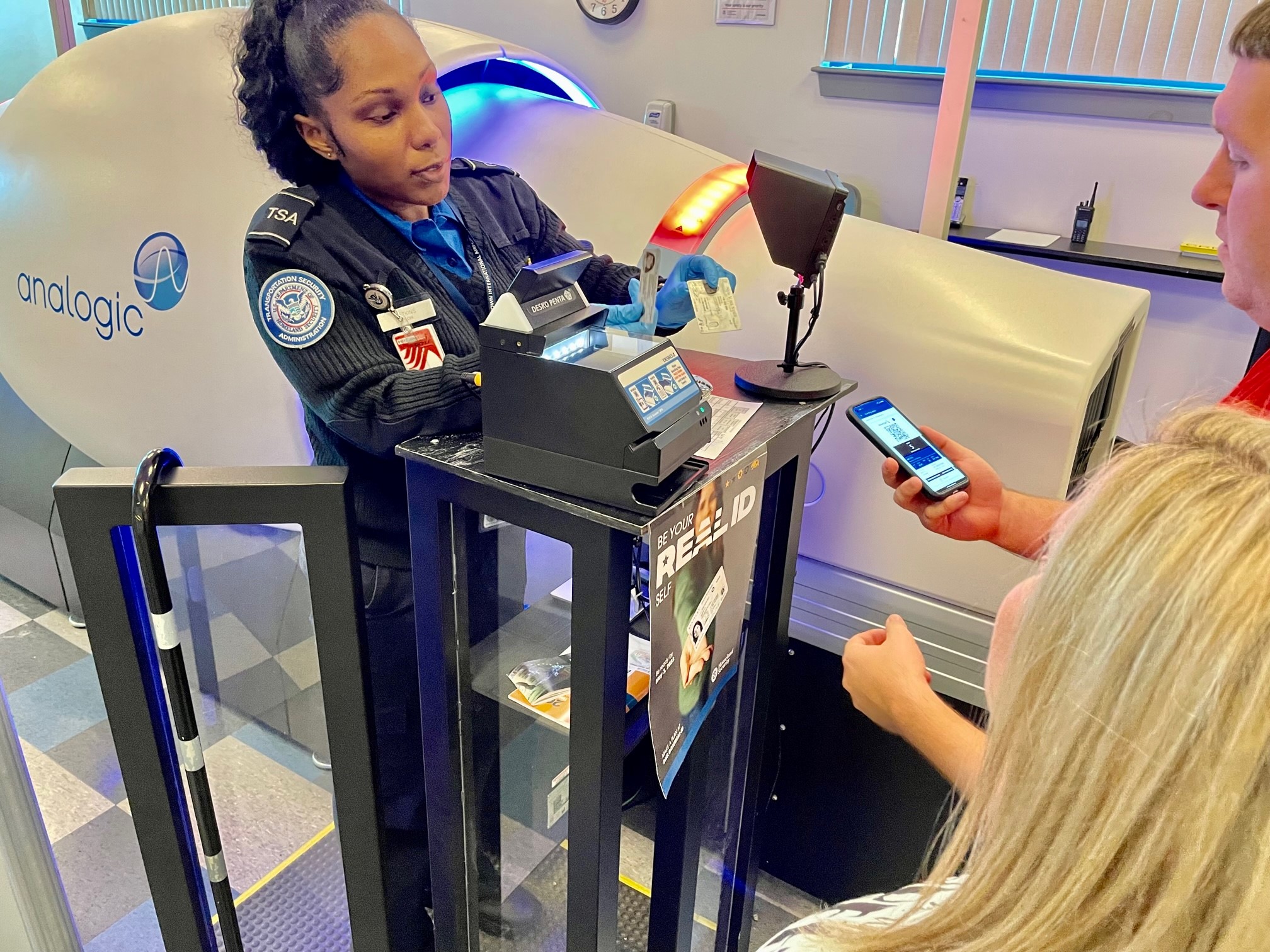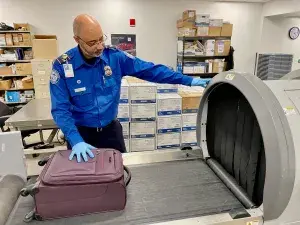 A TSA officer at Watertown International Airport reviews a traveler’s ID and boarding pass at the security checkpoint. (TSA photo)
A TSA officer at Watertown International Airport reviews a traveler’s ID and boarding pass at the security checkpoint. (TSA photo)
Officials from the Transportation Security Administration (TSA) recently commemorated the 20th anniversary of the federalization of five airports in New York State.
Watertown (ART) and Massena (MSS) International Airports launched under TSA security oversight 20 years ago on Nov. 6, 2002. Ogdensburg International Airport’s (OGS) 20th anniversary of federalization was on Nov. 8th. The other New York-based airports that were federalized 20 years ago last week included Ithaca Tompkins International (ITH) and Adirondack Regional (SLK), which were staffed by federal TSA officers on Nov. 12, 2002, a little more than one year after the terrorist attacks of Sept. 11, 2001.
The Aviation and Transportation Security Act (ATSA) became law in November 2001, formally establishing the TSA. That fall, TSA consisted of about 100 people working at folding tables in the basement of the Department of Transportation national office. Today, 20 years later, there are 430 federalized airports and a workforce of about 60,000 employees nationwide.
“The Transportation Security Administration was created 20 years ago, approximately one year after the tragic terrorist attacks of September 11, 2001,” said Bart R. Johnson, TSA’s Federal Security Director for ART, MSS, OGS, ITH and SLK airports along with eight other airports across the state. “The mission of the TSA is to protect our nation’s transportation system by outmatching a threat that has evolved since September 11th.”
From the initial federalization as a TSA airport 20 years ago until the present day, the “professional and well-trained TSA team here in the Upstate New York airports has been focused on the mission, and relies on state of the art equipment to prevent another terrorist attack from occurring,” Johnson said.
“I consider myself to be very fortunate to work with such a dedicated group of TSA employees. We are also fortunate to have forged such strong partnerships with local airport officials, the airlines and local law enforcement, which has further strengthened and improved our security posture,” Johnson said.
Guided by an intelligence-based approach, today TSA is at the forefront of security technology and innovation. Technologies such as computed tomography, credential authentication technology and advanced imaging technology have greatly improved TSA’s detection and identity verification capabilities in ways the initial group of TSA employees could have only imagined 20 years ago.

